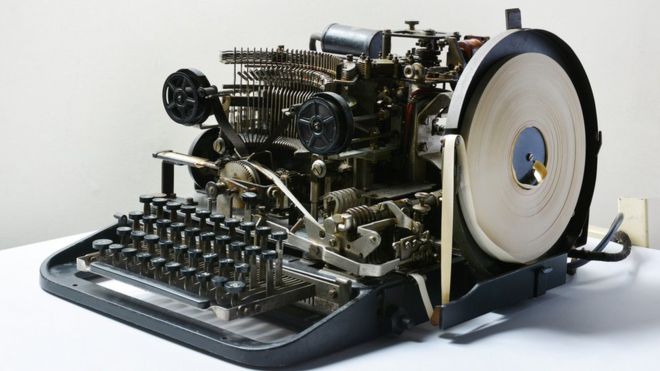While searching eBay, volunteers for The National Museum of Computing at Bletchley Park found the keyboard from Hitler’s Lorenz cipher machine, used to send coded messages to his generals. Listed as a telegram machine, the part was priced at £9.50. The Buckinghamshire museum is asking people to be on the lookout for the motor.
“My colleague was scanning eBay and he saw a photograph of what seemed to be the teleprinter,” said John Wetter, a volunteer at the museum. He went to Southend to see the part for himself. The keyboard was being kept in the original case, on a shed floor “with rubbish all over it”.
“We said, ‘Thank you very much, how much was it again?’ She said ‘£9.50’, so we said ‘Here’s a £10 note – keep the change!'”
The teleprinter was similar to a typewriter. Messages could be typed in the device in plain German. A linked machine would use 12 individual wheels with multiple settings on each to translate the message into code.
Andy Clark, the chairman of the trustees at The National Museum of Computing, said that the Lorenz was stationed in secure locations. “It was far bigger than the famous portable Enigma machine.”
“Everybody knows about Enigma, but the Lorenz machine was used for strategic communications,” said Clark. “It is so much more complicated than the Enigma machine and, after the war, machines of the same style remained in use.”
The museum received a Lorenz on loan from Norway’s Armed Forces Museum.
Volunteers will be working on June 3 to try to replicate the process of entering a message in German and cracking the code using equipment available during the war. “This gives us the chance to show the breaking of the Lorenz cipher code from start to finish,” said Andy Clark.
“We can show every single point in the process.”
The volunteers found an official wartime number stamped on the teleprinter they bought. The number matches the number stamped on the device borrowed from Norway. There is still one key piece missing and volunteers are searching for it.
“It looks like an electric motor in black casing with two shafts on either side, which drive the gears of the Lorenz machine,” volunteer John Wetter explained.
Volunteers want the public to be on the lookout for the motor. If nobody finds it, however, they hope that someone will be able to build them a new one until the original part is located.
